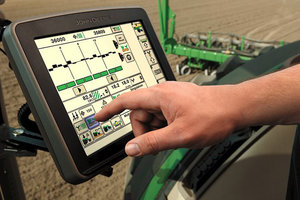According to recent data shared by the USDA’s Economic Research Service, the largest corn farms (those with more than 2,900 acres) are twice as likely to adopt precision agriculture technologies including GPS-based mapping systems, auto-steer systems and variable-rate technology (VRT) than smaller farms.
The data shows that 70-80 percent of these large farms use mapping technologies, about 80 percent use guidance systems, and between 30 and 40 percent use VRTs.
In contrast, GPS mapping systems are the most widely-adopted precision agriculture technologies across all corn and soybean farms at around 50 percent. Machine guidance systems and auto-steer technologies are used on just about a third of all corn and soybean farms and VRTs are used on less than a quarter.
“How and whether farm managers decide to adopt new technologies is complex, but most account for the full costs and benefits of the proposed investment. Precision agriculture (PA) technologies require a significant investment of capital and time, but may offer cost savings and higher yields through more precise management of inputs,” writes David Schimmelpfennig, the author of the report.
All three precision agriculture technologies reportedly have positive impacts on net returns and operating profits for corn farmers. According to the data, GPS mapping results in a 3 percent lift in operating profit and a 2 percent increase on net returns. Guidance systems raise operating profit for corn farmers by 2.5 percent and net returns by 1.5 percent. VRTs raise both the operating profit and net return by about 1 percent.
